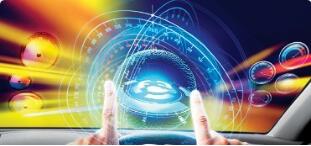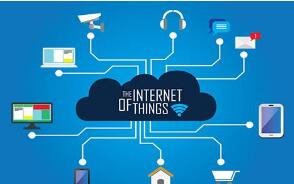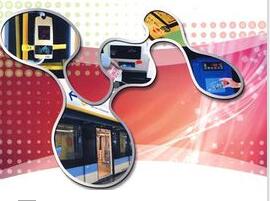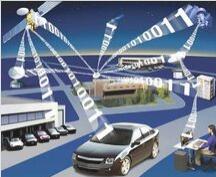It is a multi-hop self-organizing network system formed by a large number of inexpensive micro sensor nodes deployed in the monitoring area and formed by wireless communication. Its purpose is to cooperatively perceive, collect and process the information of perceived objects in the network coverage area and send it to the observer. Three Elements of Sensor Networks: Sensors, Sensors, and Observers The study of sensor networks started in the late 20th century. Since the 21st century, sensor networks have attracted great attention from the academic, military, and industrial communities. The United States and Europe have initiated many research projects on wireless sensor networks. 1. In the military field: The US Department of Defense and military departments began to initiate research on sensor networks. 2. In the civilian sector: The US Department of Transportation proposed the "National Intelligent Transportation System Project Plan" in 1995 and is expected to be fully operational by 2025. 3. Academia: The Natural Science Foundation of the United States established a wireless sensor network research program in 2003. 4. Since 2004, more Chinese universities and research institutes have joined the research work in the field. Detects thermal, infrared, sonar, radar, and seismic signals in the surrounding environment using sensors built into the nodes to detect temperature, humidity, noise, light intensity, pressure, soil composition, size, speed, and direction of moving objects. Physical phenomena. Computer network technology represented by the Internet is a great achievement of computer science in the 20th century. It has brought profound changes to our lives. However, the network function is powerful, the network world is rich, and it is ultimately virtual. It is still separated from the real world we live in. In the online world, it is difficult to perceive the real world. Many things are still impossible. The era calls for new network technologies. The sensor network is a brand-new network technology that came into being in this context. It integrates sensors, low-power consumption, communications, and micro-electromechanical technology. It can be foreseen that in the near future, the sensor network will give us Lifestyle has brought revolutionary changes. The key technologies of WSN: network topology control, network protocol, network security, time synchronization, positioning technology, data fusion, data management, wireless communication technology, embedded operating system, application layer technology. Features: Large-scale networks, self-organizing networks, dynamic networks, reliability networks, application-related networks, data-centric networks. Military applications, environmental observation and forecasting systems, medical care, smart homes, building status monitoring, and other applications (such as space exploration, smart dust, etc.). The concept of the Internet of Things (The Internet of Things) was proposed in 1999. Its definition is very simple: All items are connected to the Internet through information sensing devices such as radio frequency identification to realize intelligent identification and management. The convergence of applications of the Internet of Things through intellisense, recognition technology, pervasive computing, and ubiquitous networks is known as the third wave of the development of the world's information industry following the computer and the Internet. The Internet of Things is regarded as the application expansion of the Internet. Application innovation is the core of the development of the Internet of Things. Innovation 2.0, with user experience as the core, is the soul of the development of the Internet of Things. The Internet of Things is based on the computer Internet, using RFID, wireless data communication and other technologies to construct an "Internet of Things" that covers everything in the world. In this network, goods (goods) can “communicate†with each other without human intervention. Its essence is the use of radio frequency automatic identification (RFID) technology, through the computer Internet to achieve automatic identification of goods (goods) and information interconnection and sharing. RFID, on the other hand, is a technology that allows items to “talkâ€. In the concept of “Internet of Thingsâ€, RFID tags store standardized and interoperable information, and they are automatically collected by the wireless data communication network to the central information system to realize the identification of goods (goods), and then through openness. The computer network realizes information exchange and sharing and realizes "transparent" management of items. The advent of the concept of "Internet of Things" broke the traditional thinking of the past. The old idea has always been to separate the physical infrastructure from the IT infrastructure: airports, roads, buildings on the one hand, and data centers, personal computers, broadband, on the other. In the “Internet of Things†era, reinforced concrete and cables will be integrated with chips and broadband as a unified infrastructure. In this sense, the infrastructure is more like a new earth site, and the world’s operations will be carried out on it. Including economic management, production and operation, social management and personal life. The first is comprehensive sensing, which uses RFID, sensors, two-dimensional codes, etc. to obtain information of objects anytime, anywhere. The second is reliable transmission. Through the integration of various telecommunication networks and the Internet, the information of objects is accurately transmitted in real time; The third is intelligent processing, using cloud computing, fuzzy identification and other intelligent computing technologies, analyzing and processing massive data and information, and implementing intelligent control of objects. The Internet of Things is widely used, covering intelligent transportation, environmental protection, government work, public safety, safe home, smart fire, industrial monitoring, environmental monitoring, street lighting control, landscape lighting control, building lighting control, lighting control, elderly care, personal Health, flower cultivation, water system monitoring, food traceability, enemy investigations and intelligence gathering. The Internet of Things will be the next "important productivity" driving the rapid development of the world. It will be another trillion-level market following the communications network. Experts in the industry believe that on the one hand, the Internet of Things can improve economic efficiency and greatly reduce costs; on the other hand, it can provide technical momentum for the recovery of the global economy. The United States, the European Union and other countries are investing in senior research to explore the Internet of Things. China is also paying close attention to and attaching importance to research on the Internet of Things. The Ministry of Industry and Information Technology, together with relevant departments, is conducting research on a new generation of information technology to form policies and measures to support the development of a new generation of information technology. In addition, after popularization, the number of sensors and electronic tags and associated interface devices for animals, plants, and machines and articles will greatly exceed the number of mobile phones. The promotion of the Internet of Things will become another driver to promote economic development, and it will open up yet another potential for development for the industry. According to the demand for the Internet of Things, hundreds of millions of sensors and electronic tags are needed, which will greatly advance the production of information technology components and increase the number of job opportunities. 1, in a broad sense The Internet of Things and sensor network are basically the same in composition. They are different expressions of the same thing. The Internet of Things is closer to the essence of “material†than sensor network, and it emphasizes that information technology and equipment provide a higher level of “objectâ€. Application services; sensor networks (sensor networks) are objective descriptions from the perspective of technology and equipment, and the elements of equipment and technology are obvious. For example, the sensor network is a scientific name, and the Internet of Things is a common name; or the sensor network is a big name and the Internet of Things is a name. 2, from the perspective of industry and users It is called Internet of Things: from the perspective of technical support, it is called a sensor network. The Internet of things and the sensor network are the same thing, and their essence is the sensor network.
BLPS laser safety protective device is designed for personal safety used on hydraulic bender.
Press Brake Protection,Laser Guarding Device,Press Brake Guarding Systems,Press Brake Guarding Jining KeLi Photoelectronic Industrial Co.,Ltd , https://www.sdkelien.com



The dynamic test technology it used has passed the Type 4 functional safety assessment by TUV, and get the national invention patent. The product reaches the advanced technological level of similar products.
BLPS laser safety device provides protection zone near the die tip of the bender to protect fingers and arms of the operator in close to the upper mold die tip. It is the most effective solution so far to preserves the safety and productivity of the bender.
What is a sensor network